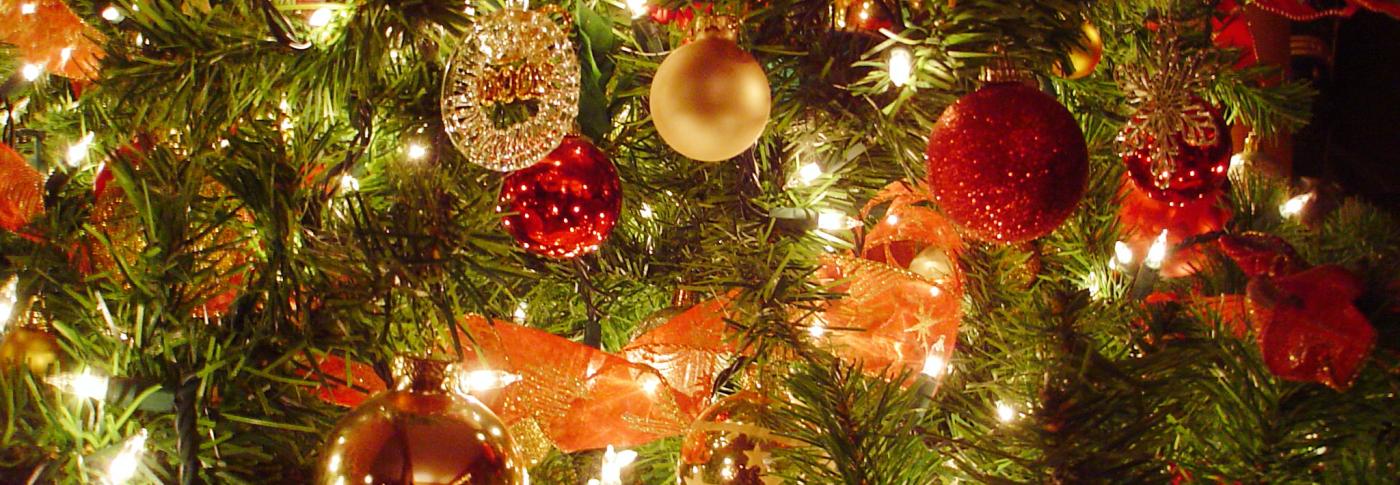
Powering up Christmas: Here’s our top 10 festive facts from the Electricity National Control Centre!
10 Dec 2020 - 3 minute read
Our control room balances the grid second by second which gives our engineers a unique insight into the nation’s Christmas habits and how they affect electricity use.
Was it Strictly Come Dancing, Call the Midwife or the Queen’s Speech that caused the biggest pickup in power demand?
Which source of electricity is powering our Christmas tree lights and firing up our ovens for the festive feast?
Rob Rome, our Head of National Control, explains all in our top 10 festive facts.
1. Christmas Day is the only day of the year when demand for electricity doesn’t peak at teatime! Demand picks up all morning until lunchtime and peaks at 1.30pm when many of us are serving our turkey lunch! It then drops off throughout the day as we laze in front of the TV.
2. It’s usually one of the lowest demand days of the year, due to the closure of shops, factories, schools, offices and many pubs. Peak demand for 2019 Christmas Day (the chart below) was 33.3GW. This compared to a 2019 high of 46GW in November. Demand has been reducing each year due to ever-growing efficiency of appliances.
3. The parents among you won't be surprised that we still see a 5am demand pick up curve on Christmas Day! The lights coming on to see the excited children opening their gifts, and of course turkeys going into the ovens too
4. The largest Christmas Day TV pick up in recent times was a huge 1,340MW in 1996 for the Only Fools & Horses Christmas special. We’re sure you remember those Batman & Robin outfits in the Heroes & Villains special!
5. We rarely see a Christmas TV pick up higher than 400MW these days due to on demand TV. This year there may be a small pick up for the Queens Speech.
6. 2016 was the greenest Christmas Day ever due to mild and windy weather. As we continue to operate a cleaner electricity system, could we take that record this year?
7. Only 1.8% of festive electricity came from coal generation last year. Could 2020 to be the first coal free Christmas?
8. 14.1% of all 2019 Christmas Day electricity came from wind power. Up from a mere 0.3% in 2008 as renewables play an increased role in electricity generation.
9. Christmas lights don’t crash the grid! As lights all tend to come on at the same time and then stay on (rather than being switched on and off at different times) their impact on overall demand for electricity is negligible.
10. Planning to head out for a Boxing Day walk? Did you know it’s usually the lowest demand day of the year? That’s because as a bank holiday many businesses are still closed, but more of us are out of the house compared to Christmas Day.
Rob Rome, Head of National Control at National Grid ESO adds:
“The engineers in our control room work 24/7 to keep the grid in balance and Christmas is no different, with teams working throughout to ensure safe, secure and reliable electricity.
Demand for electricity is usually low on Christmas Day, and habits tend to be the same every year. Even more so now we have on demand TV which makes TV pick ups fewer and far between.
Many people will be watching the weather hoping for a White Christmas, and it has an impact on electricity too. If it’s mild and blustery then renewable sources will make up a significant proportion of the electricity used to cook turkeys and light up trees – perhaps even a record level. If it’s cold then demand will be a little higher, but nothing compared to a standard weekday.
This year has been the greenest year on record for GB electricity, with the longest ever period of coal free electricity and record levels of wind and solar generation. We’re hoping that this Christmas Day will be the greenest on record too!”
